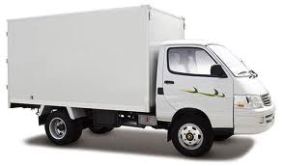Ice ice baby! The ice and snow is upon us, and safe winter driving in your Mitsubishi Fuso, Isuzu, Hino, or UD freight truck requires good handling techniques, but even expert drivers have a hard time navigating through snow and ice in trucks that aren’t prepared for wintry conditions.
Knowing how to maintain the braking system properly is the key to a long lasting system and will ensure highway safety. Proper brake maintenance practices are especially vital when considering your time and more importantly – safety.
- Addressing contamination and corrosion is important because of the ripple effect it can have on other parts of the vehicle. With all of the difference de-icing materials on the road today, inspecting the chassis components, especially the linings and wiring for damage and corrosion is very important. Also inspect for oil and water in the air brakes reservoirs. Any form of corrosion on the braking system will damage the overall system further.
- Slack adjusters must be inspected frequently to ensure they are in optimal condition. Technicians should not adjust the brakes during preventive maintenance procedures, instead they should check the free stroke and then measure the power stroke. This will enable to technician to know if the slack adjuster is working correctly.
- Maintain a clean air system. Drivers should drain the air tanks daily. At a minimum, the air dryer should be serviced once a year. It’s imperative you keep dry, clean air in the system at all times.
- Perform a visual inspection or walk-a-round, adding miles or years to the life of the vehicle’s braking system. Drivers are required by the department of Transportation’s Commercial Vehicle Safety Alliance to perform pre- and post-trip inspections. There is a good chance the driver will catch a small failure prior to a major problem. It will keep costs under control and major repair expenses down.
- The anti-lock braking system (ABS) should be in optimal order. It’s essential to check the ABS warning light, the speed sensors, tone ring, wiring and connectors, and the electronic control unit diagnostics. The ABS warning light is an indication something may be wrong. During operation it may light up, which means there may be an intermittent problem the driver needs to report.
The introduction of more electronic sensors will provide more information on individual components that place a higher demand on the electrical system. Undoubtedly, there will be additional data for technicians, as well as new maintenance procedures. Proper training must be in place to deal with and accept new technology.
Safe winter driving in your Mitsubishi Fuso FE, FH, FK or UD 1200, 1300, 1400, 1800 or 2000 series, Isuzu NPR, NQR, GMC W3500, 4500, 5500, any other mid size truck or even regular passenger cars requires good handling techniques, but even expert drivers have a hard time navigating through snow and ice in trucks that aren’t prepared for wintry conditions.
Every system in your truck should be in good repair to take on winter driving, but we depend on tires and brakes to roll us where we want to go and slow us down when it’s necessary. Maintenance for both should be at the top of your to do list.
Knowing how to maintain the braking system properly is the key to a long lasting system and will ensure highway safety. Proper brake maintenance practices are especially vital when considering your time and more importantly – safety.
- Addressing contamination and corrosion is important because of the ripple effect it can have on other parts of the vehicle. With all of the difference de-icing materials on the road today, inspecting the chassis components, especially the linings and wiring for damage and corrosion is very important. Also inspect for oil and water in the air brakes reservoirs. Any form of corrosion on the braking system will damage the overall system further.
- Slack adjusters must be inspected frequently to ensure they are in optimal condition. Technicians should not adjust the brakes during preventive maintenance procedures, instead they should check the free stroke and then measure the power stroke. This will enable to technician to know if the slack adjuster is working correctly.
- Maintain a clean air system. Drivers should drain the air tanks daily. At a minimum, the air dryer should be serviced once a year. It’s imperative you keep dry, clean air in the system at all times.
- Perform a visual inspection or walk-a-round, adding miles or years to the life of the vehicle’s braking system. Drivers are required by the department of Transportation’s Commercial Vehicle Safety Alliance to perform pre and post-trip inspections. There is a good chance the driver will catch a small failure prior to a major problem. It will kepp costs under control and major repair expenses down.
- The antilock braking system (ABS) should be in optimal order. It’s essential to check the ABS warning light, the speed sensors, tone ring, wiring and connectors, and the electronic control unit diagnostics. The ABS warning light is an indication something may be wrong. During operation it may light up, which means there may be an intermittent problem the driver needs to report.
The introduction of more electronic sensors will provide more information on individual components that place a higher demand on the electrical system. Undoubtedly, there will be additional data for technicians, as well as new maintenance procedures. Proper training must be in place to deal with and accept new technology.
